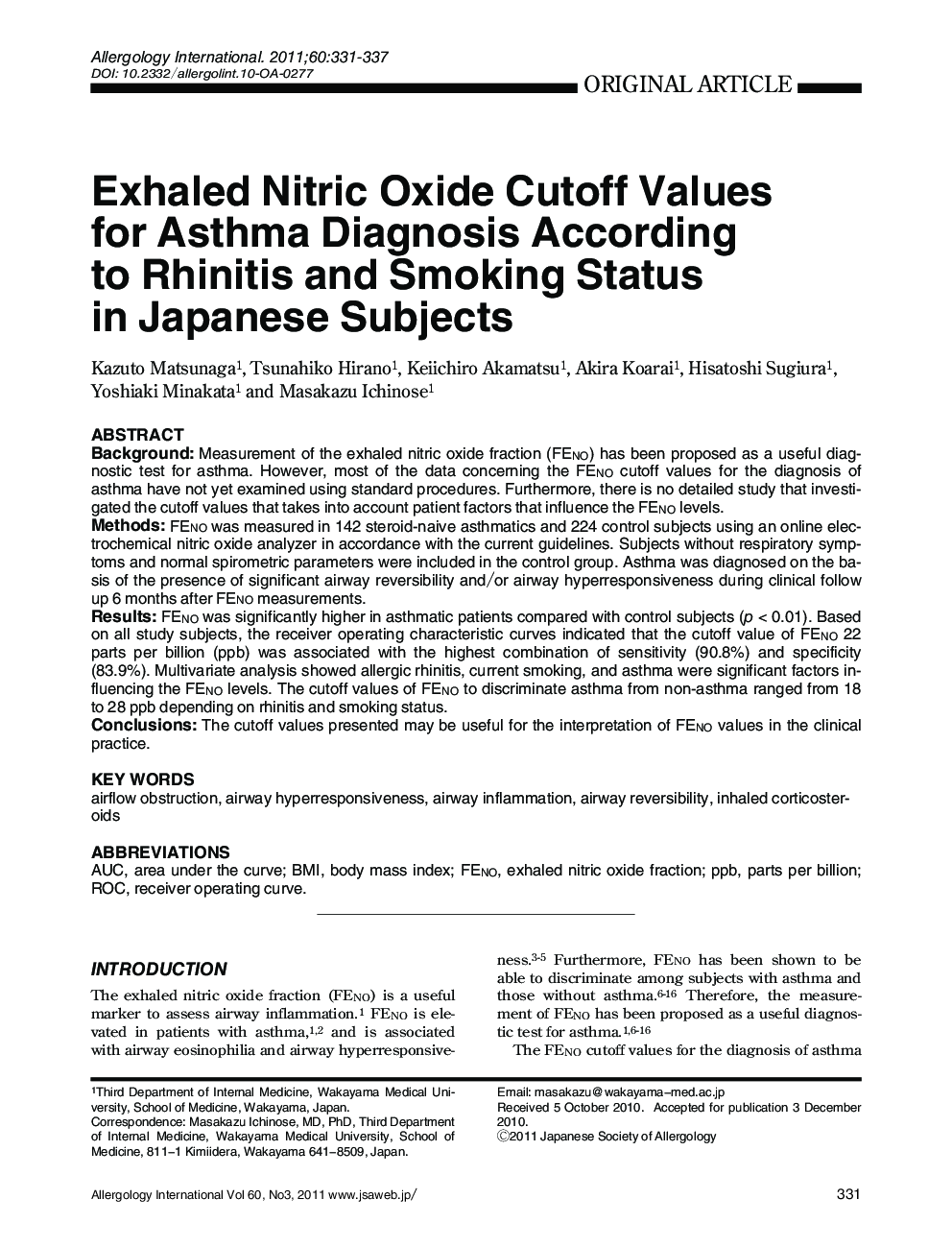| Article ID | Journal | Published Year | Pages | File Type |
|---|---|---|---|---|
| 3340908 | Allergology International | 2011 | 6 Pages |
ABSTRACTBackgroundMeasurement of the exhaled nitric oxide fraction (FEno) has been proposed as a useful diagnostic test for asthma. However, most of the data concerning the fEno cutoff values for the diagnosis of asthma have not yet examined using standard procedures. Furthermore, there is no detailed study that investigated the cutoff values that takes into account patient factors that influence the FEno levels. Methods: FEno was measured in 142 steroid-naive asthmatics and 224 control subjects using an online electrochemical nitric oxide analyzer in accordance with the current guidelines. Subjects without respiratory symptoms and normal spirometric parameters were included in the control group. Asthma was diagnosed on the basis of the presence of significant airway reversibility and/or airway hyperresponsiveness during clinical follow up 6 months after FEno measurements.ResultsFEno was significantly higher in asthmatic patients compared with control subjects (p < 0.01). Based on all study subjects, the receiver operating characteristic curves indicated that the cutoff value of FEno 22 parts per billion (ppb) was associated with the highest combination of sensitivity (90.8%) and specificity (83.9%). Multivariate analysis showed allergic rhinitis, current smoking, and asthma were significant factors influencing the FEno levels. The cutoff values of FEno to discriminate asthma from non-asthma ranged from 18 to 28 ppb depending on rhinitis and smoking status.ConclusionsThe cutoff values presented may be useful for the interpretation of FEno values in the clinical practice.
